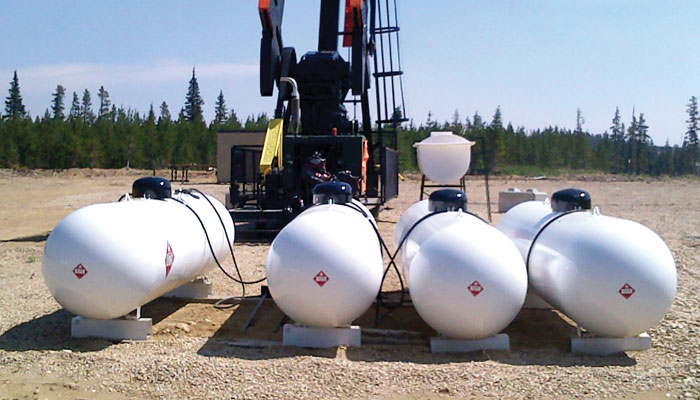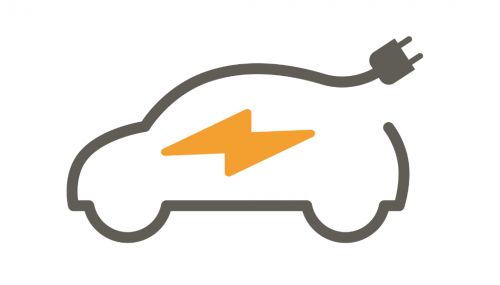Remote transmitters help eliminate run-outs and short fills
Remote monitoring of fuel tank levels is a practice that is growing in usage across North America because it has the potential to save significant costs for fuel retailers. With effective remote monitoring, costly nuisance trips to top off a mostly full tank can be eliminated, as can unscheduled emergency trips to fill a tank that has gone completely empty. Every dealer has the potential to save money through close tracking of inventory levels, but the greatest savings can be had when tanks are located many miles away, possibly in locations that are difficult to access.
There are three basic types of remote tank level monitoring technologies available today: gauge readers, ultrasonic sensors and radar devices. For the retailer they differ in cost, reliability, ease of installation and telemetry options. Some use telephone landlines. Others use cell phone connections. Still others use satellite transmitters. The choice of what equipment to use can depend on the geography and nature of the dealer’s customer base. Here is a look at how three clients of Schmitt Industries have used tank monitoring to improve delivery efficiency.
Superior Propane
Superior Propane, one of the largest dealers in Canada, did a pilot evaluation of remote monitoring technologies in 2012. “We wanted to increase our delivery efficiencies,” said Shane Steele, National Logistics Analyst for Superior Propane. “One of our key performance indicators is fill rate measured as gas volume delivered per stop, and based on the results of our pilot project we decided that remote monitoring was the way to go.” Today, the company employs three different types of remote tank monitors: an older kind that is phone-line-based as well as the latest satellite and cellular units. “The ones with phone connections aren’t user friendly in remote areas and the reliability isn’t as good,” said Steele, “whereas the satellite monitors we can put anywhere. We have monitors from Victoria to Newfoundland.”
“The cellular units may not work everywhere,” continued Steele, “but they can be controlled remotely, whereas the satellite monitors use one-way communications only, so any option reprogramming and troubleshooting must be done on-site.” Today, Superior installs about equal numbers of cellular and satellite units.
The satellite units that Superior installs are Xact monitors, manufactured by Schmitt Industries of Portland, Oregon. Schmitt makes two versions of the monitor, a gauge reader plug-in and an ultrasonic monitor. “The gauge readers are only as accurate as the gauge,” said Steele. “Gauge reader accuracy is within 5 to 8 percent.”
Superior offers a “smart tank package” to its customers, which includes a tank and sensor for a single monthly rental rate. “Overall we’ve seen at least a 10 percent gain in drop rate per stop,” said Steele. “We’re trending about 40,000 saved deliveries per year, and at a $65 theoretical cost per delivery that represents approximately $2.6M in savings per year. And that’s just on a small percentage of our customer base (about 6 percent), which has been fitted with monitors. Superior has initially offered remote monitoring to its customers that have the potential to save the most but plans to install 3,500 to 4000 sensors per year over the next few years.
Pacific Propane
Pacific Propane, of Castroville, Calif., is another propane dealer that is committed to remote monitoring of tank levels. An early user, the company has been installing remote monitors for more than eight years. “We knew that we needed to get more exact in reading tank level percentages so that we could reduce the number of miles that our drivers logged on the road,” said Maskey Heath, Pacific Propane CFO. “Before we bought our first remote monitors, we ran the numbers and came to the conclusion that we could save a half a truck out of our fleet. But the big benefit for us is that by monitoring tank levels remotely we don’t have customers running out of gas.”
A bit of a contrarian in its industry, where most dealers have focused on remote monitoring of large commercial tanks, Pacific Propane made the commitment early on to install satellite monitors on its residential tanks. “We put the monitors on most of our residential tanks—even the 120 gallon tanks use them,” said Heath. “It was a major commitment to do it, but our business depends on offering good customer service. We heard stories about reliability problems with cell phone connections and came to the conclusion that satellite-based systems would be the most trouble-free,” continued Heath. “We don’t want to bother the customer with anything.”
After having issues with the quality of support that they had gotten from the first vendor they worked with, Pacific Propane switched to using Xact tank monitors from Schmitt Industries. “We use the gauge reader versions on 95 percent of our customers’ tanks,” said Heath. “We save the ultrasonic version of the Xact product for when a customer’s gauge doesn’t work correctly or when there’s a big user and we need to be exact in our level monitoring and can’t take the chance of the gauge not working.”
The Xact system enables tank levels to be read via any Internet-enabled device, and for some customers, Schmitt does the monitoring. “We get a reading from Schmitt every day of tanks that are below the 30 percent level so we are able to plan for the most efficient delivery routes,” said Heath. “Today we’re able to handle the same customer base with three delivery trucks that used to require four trucks.”
Parkland Fuel Corp.
The Parkland Fuel Corp., of Alberta, is Canada’s largest independent fuel distributor. Many of their propane customers are in remote oilfields where phone lines and even cellular phone coverage is non-existent. Therefore, satellite monitoring is the only way to go. When the Parkland management team was looking for a satellite monitoring supplier, they put out a request for proposal.
Four prospective vendors made the short list, and ultimately the choice was made to purchase Xact monitors from Schmitt Industries. Parkland bought 100 units in order to verify what they estimated to be a one-year payback period, however they were surprised to conclude that, based on a reduction in the number of tank filling trips to the remote oilfields (which the company estimated to cost $59 on average), the payback period was actually more like two months.
“It takes one-and-a-half hours to reach some of our customers in the oilfields, and before online monitoring, we used to have a driver visit each tank location weekly,” said Robert Langner, Parkland Logistics Manager. “Now with tank monitoring we only need to send a truck to the tanks that need filling, and then do an optimal fill.” This has allowed one of Parkland’s locations, which would normally use five delivery trucks in the winter, to reduce its operating fleet to just four trucks.
“We standardized on gauge reader models to track the levels in our remote tanks in the oilfields because almost all of those tanks use the mechanical gauges to save costs,” said Robert Langner. “Since we had no readings before, knowing our inventory levels to within 5 percent accuracy as we do with the gauge readers gives us much better control than we had previously.” For highest precision, Parkland also bought some of the Xact ultrasonic units to monitor the company’s own storage locations. In Ontario, Parkland plans to outfit all of the units they are responsible for with ultrasonic sensors to enable the company to do precise remote tracking of inventory.
Inventory shrinkage is an issue in some of Parkland’s operating areas. “We need to know as soon as possible when the level in one of our tanks drops unexpectedly,” continued Langner. “The tank monitors can tell us exactly when this occurs so we can go to our surveillance film and see want happened. With this capability, we can monitor our supply tanks in Ontario from our headquarters in Alberta.”
Parkland has had a very positive experience so far with the Xact monitors. During the trial period, one of the other sensor lines that they tested gave them problems relating to short battery life. The batteries in those units were going to need replacement yearly, whereas the batteries in the Xact monitors are designed specifically to work in the harsher environments, and are lasting through consecutive winters of minus 50 degrees. “Another company that we evaluated uses a different style of satellite and we wouldn’t have had good coverage based on our trial test,” said Langner, “and a third company’s products were very similar to Xact, but their pricing was much higher. Xact is the only company with a proven, sound, quality ultrasound unit. Buying both types of monitors allows us to have one website and one API interface and to buy in bulk from one supplier.”
The experiences of these companies show that, though the customers and geographies differ, there is a remote monitoring solution that can help make operations more efficient and reduce operating costs for virtually all propane dealers.





